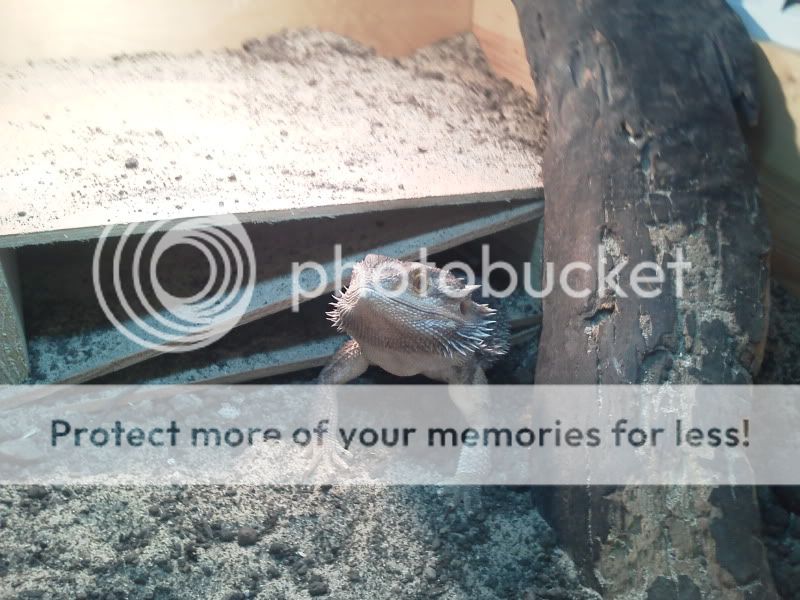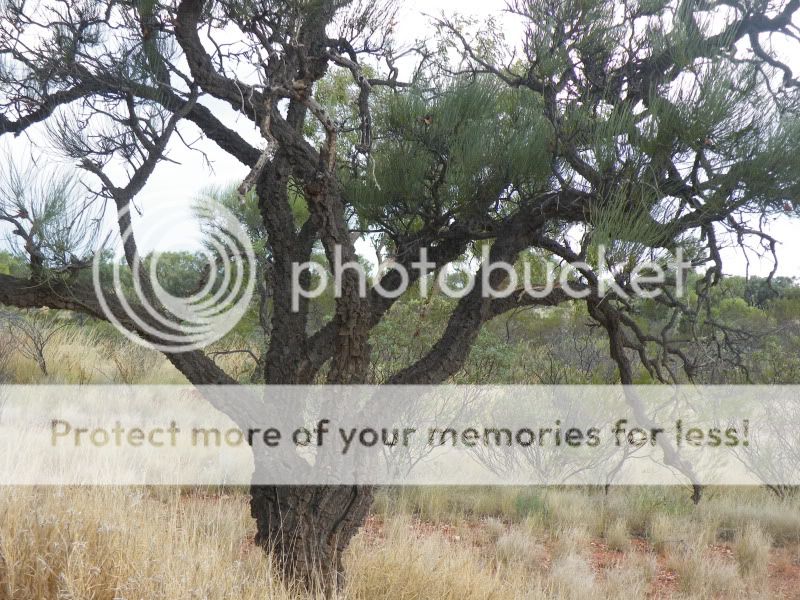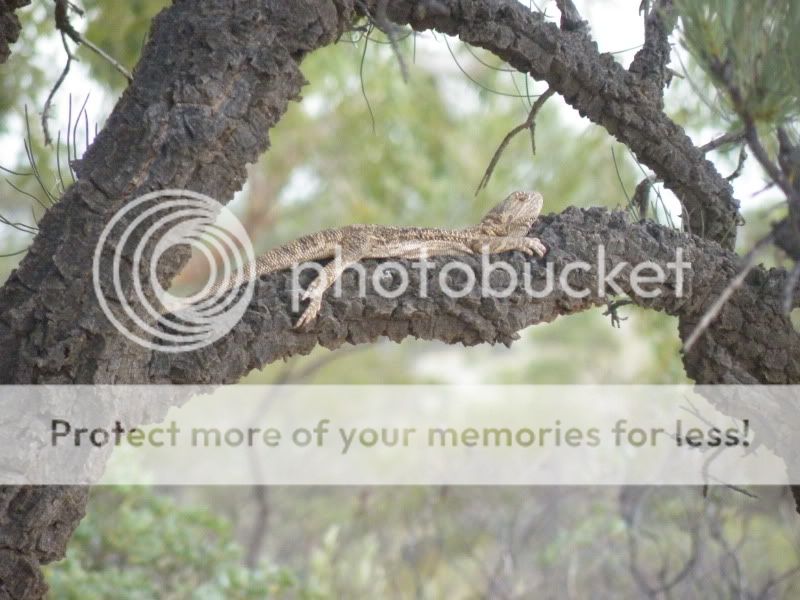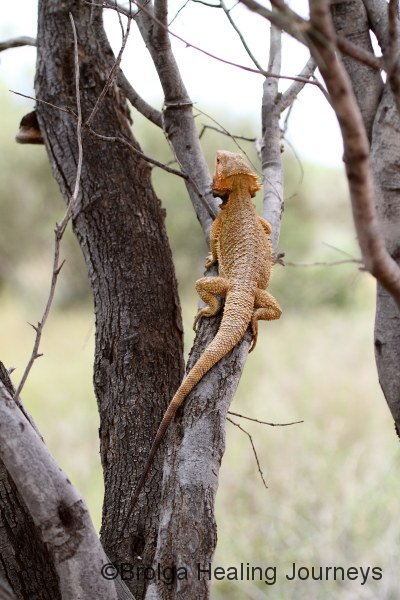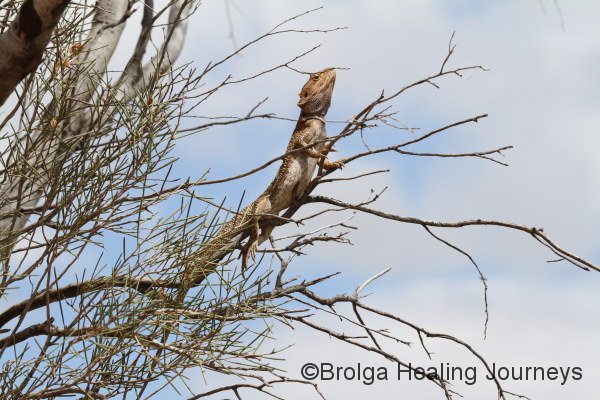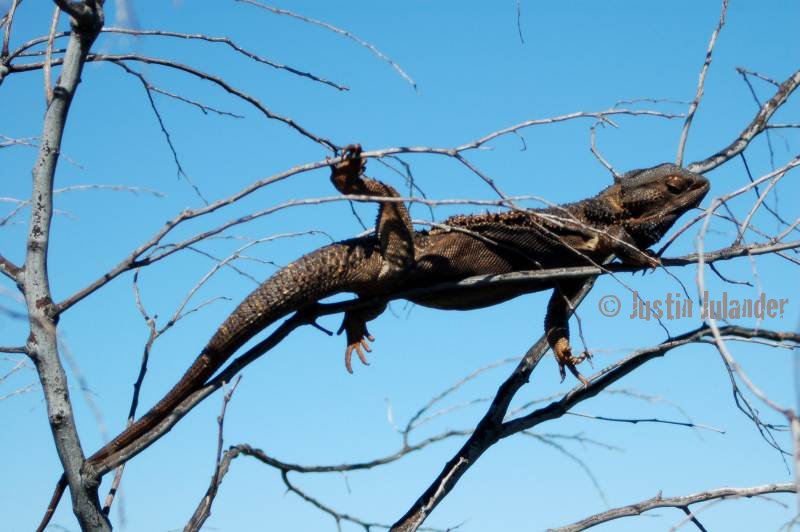Skymall007":1lc06n81 said:
Since I am so new to beardies I can't say my opinion. I def. think it looks pretty awesome looking though and your beardies are so cute!
The one thing that comes to mind is just some of the bugs that could come in with the soil. I read that beardies can't eat fire flies and will do so because they don't have them in their native habitats. I would worry about them eating something that could potentially be harmful and the beardie won't know it because that particular invertebrate is not native to their homeland.
I keep reading about impaction problems with having sand? How do beardies deal with the sand naturally? In the wild, there is sand. Perhaps the sand is just hard packed so they don't eat it? I am confused about why sand is dangerous for them.
for the bugs - there is definitely some bugs that are not good for beardies. fireflys, lady bugs, milipiedes....all of which are native to me.
i do my best to sift through all my soil as its being added to make sure and get all these little guys out....the lady bugs and fireflys im not worried about, but i check throughly for milipedes (which i found in a bucket of soil i collected yesterday for my snake enclosure)
for my beardies, i used bagged topsoil, simply because of how much i needed to collect.....and once i put my snake in a 6x3, he will also get bagged
sifting the soil and/or buying bagged soil is a great way to prevent certain pests from showing up
for impaction - in the wild they are on a hard packed dirt surface....they live in a lowlands shrubbery type of environment.....they dont get impacted because they are in their natural habitat and are well
hydrated and eating properly....beardies do a lot of things in nature that we dont provide for them often.....did you know they climb trees? there are pics posted on another forum (ill be happy to share them if you like) of wild beardies up in tall trees out at the very end of the limbs.....they also have winter brumation, as well as summer brumation. often times our captives brumate for winter, but not summer.....when it gets too dry and the humidity disappears, many aussie reptiles will retreat to moist burrows or hides (caves, bushes, holes, whatever) and brumate until the rainy season or until the humidity comes back some
the reason sand is "dangerous" IN MY OPINION is because many keepers keep their dragons in hot enclosures, with no humidity, and tons of ventilation....they are dehydrated and the particles get blocked up (im talking play sand - not that awful calcium sand stuff).....think of it this way.....go try and eat 10 saltine crackers without taking a drink of water....your mouth will be so dry you will be almost chocking at the end of those 10 crackers....take a drink and they pass right through
esn":1lc06n81 said:
I just offered my beardies an option to get closer to the basking lights. Tempgun says 120-130 degrees depending on how high they sit. Both my dragons have been basking in this hotter temp immediately after changing it. They're also eating more, which I like. I like the idea of giving them their own choices to get hotter than "recommended".
Do you think that higher basking temps will make it easier to digest the chitin in darkling beetle larvae (meals/supers)? I'm wondering if it is easier for them to digest that prey, considering that hotter temps allow reptiles to digest whole prey, like large mice. I'm going to do some research on that. I don't always like my adult beardie's digestion of supers, which is why I offer earthworms too if I feed supers instead of roaches. The only downside of that is the absolute rankness of earthworm-filled poo. I balance my monitor's digestion of mice and supers with earthworms as well, so that was the reasoning behind it. Any ideas on the chitin?
good to hear youre having success....this is how i started too, i upped my temps...i didnt jump right in and dump in soil...i was stuck in the mentality of "omg particles, bad bad bad"....but once i started to see some more changes recommended to me by a friend, i decided his way is obviously working for some things, why not try more....the difference was immediate, soon as i added a moist substrate
and yes i do....my beardies used to have a lot of leftover chitin from supers and had problems passing them...now i dont find any chitin in their stool at all (not that i go digging for it - but no big piles like before)
my beardies both ate supers dusted in calcium as their staple feeders for several months, so ive definitely seen a difference....theyre eating roaches now, and crickets once i can order some
Floof":1lc06n81 said:
Skymall007":1lc06n81 said:
I keep reading about impaction problems with having sand? How do beardies deal with the sand naturally? In the wild, there is sand. Perhaps the sand is just hard packed so they don't eat it? I am confused about why sand is dangerous for them.
This is exactly it. If you research their native range, you'll find the ground is generally hard packed dirt, not loose sand. There are other factors as well, I'm sure, that effect probability of impaction, but a bearded dragon in the wild isn't running around on several inches of sand like many people use in captivity.
If I decide to mimic the OP's housing method, I'll personally be using a dirt/sand mix with MUCH more dirt than sand. Dirt, at least in theory, should be much easier for them to pass if ingested, which is my reasoning behind it. I'm still very concerned about the risks of sand and other loose substrates with beardies; even a dirt mix will be a stretch for me, should I choose to go through with trying it.
I threw a 75 watt bulb over my beardie this evening to start off by boosting his basking spot temp. I'll be adjusting things tomorrow to see what kind of range in basking temps I can get. We'll see what he thinks...

those "other factors" are heat and humidity....i can go outside on a summer day in ohio and find surface temps of 130+....so in the hot australian shrublands, theres no doubt temps go that high and higher.....someone posted a pic in that leo thread of surface temps over 120 or so (forget exact temp without going to look) on a day that was 70* outside.....proper heat allows them to digest their food, and proper humidity keeps them from drying out......heat plus
hydration means these guys can pass almsot anything
as for using more dirt vs more sand....i chose a mix that will allow me the proper texture for digging and moisture....dirt alone isnt a good diggable substrate, it wont hold when formed....the sand adds stability (think sand castles)....60/40 sand/dirt is a good starting point for beardies, just keep it moist.....both of my enclosures need more sand, just havent gotten around to it...im thinking ill add a bad of sand to each, and then sift it and get out the rest of the rocks and big chunks of dirt.....its on my to-do list
and i had many hesitations myself.....as did others.....it took several weeks before i convinced myself to try this method, and even then, i only did it in one of my enclosures at first, to test it out
theres anotehr forum with 2-4 other keepers who saw the changes in my dragons and are now trying this out for themselves...im not the only one....and so far, all of the dragons put through these paces, are thriving....activity is up, appetite is up,
hydration and bowel movements are more requent.....its quite amazing

